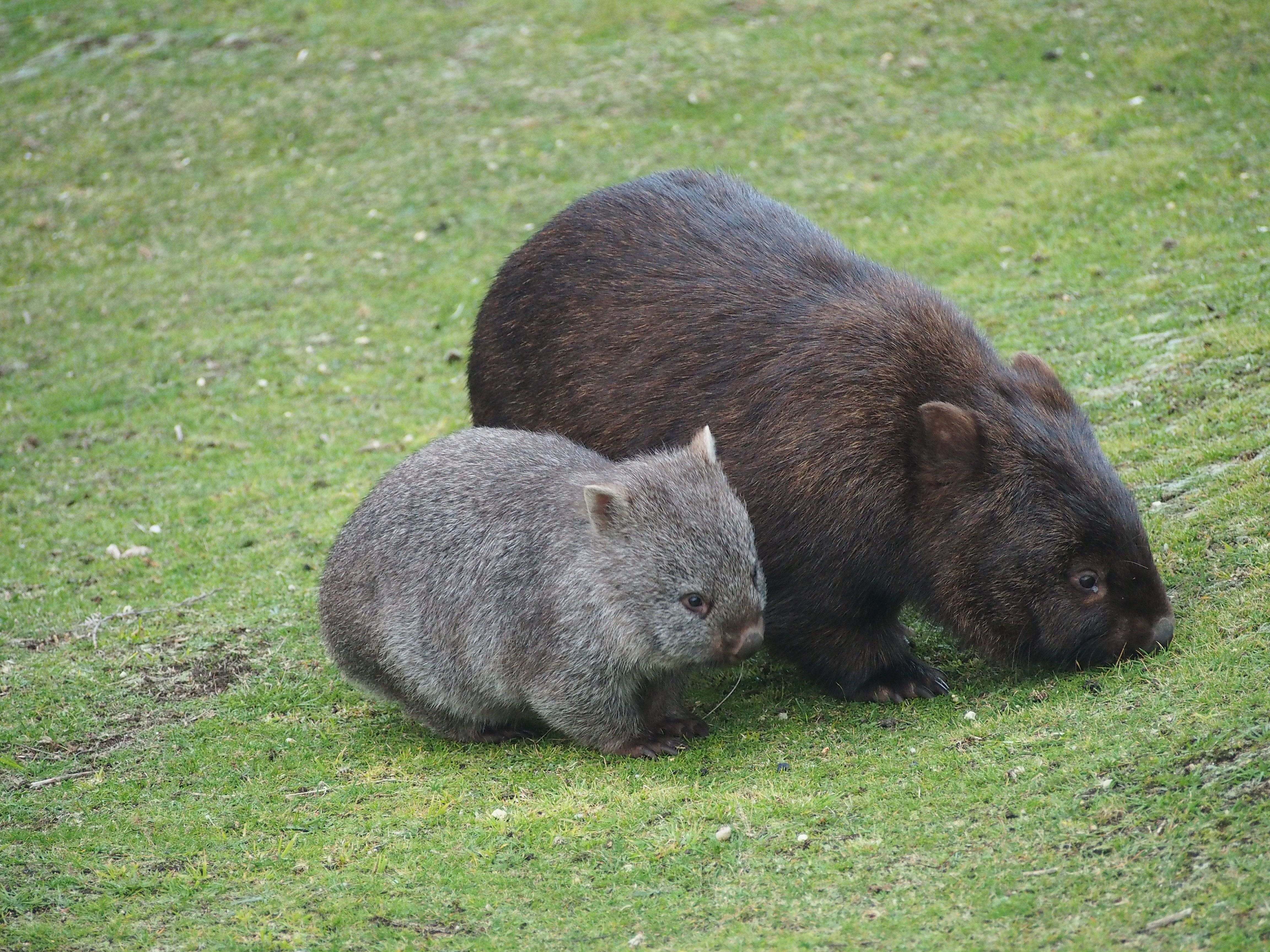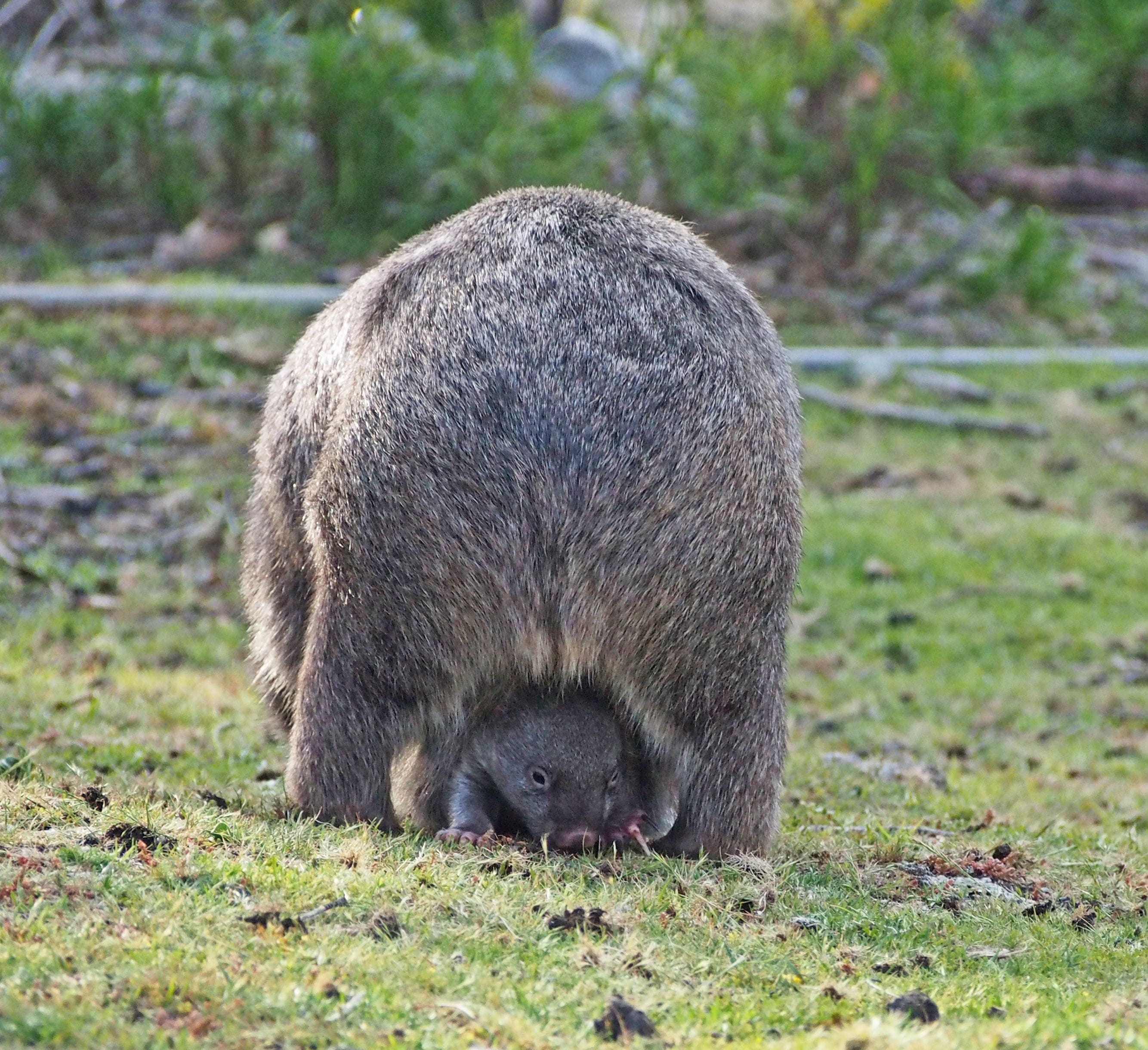Celebrating World Wombat Day
Wednesday 22 October, 2025
Whether they’re bare-nosed or hairy-nosed, the short-legged and tank-like wombat is an animal treasured by so many Aussies. Which is why we take today – Wednesday 22 October – to celebrate them!
Our beloved short, stocky and barrel-shaped marsupial was given its own day back in the early 2000s. World Wombat Day quickly gained popularity to celebrate this unique Australian creature.
When visiting parks and reserves in Victoria, the wombat you’re most likely to meet is the Bare-nosed Wombat (or Common Wombat), a resilient digger whose burrows echo with the story of bush landscapes, survival, and the need for shared stewardship.
Wombats in Victoria: protected by legislation
In Victoria, the Common Wombat (Vombatus ursinus) is the only species that occurs reliably in the wild. You may have also heard of the Southern or Northern Hairy-nosed Wombats, but these ones are pretty rare down here.
Typically solitary and territorial, Common Wombats are safeguarded under Victoria’s Wildlife Act 1975. This law protects all indigenous wildlife and their habitats, making it illegal to harm, capture, or interfere with native species without permission.
The Act sets out a framework of licences and permits, such as the Authority to Control Wildlife, helping balance conservation efforts with land management needs. Over time, it has been strengthened to improve habitat protection, boost transparency, and include Traditional Owner and community voices in wildlife decision-making.
At its core, the Wildlife Act 1975 promotes coexistence with wildlife. It reminds us that living alongside animals isn’t just a goal, it’s both a legal duty and a shared ethical responsibility

A mother and joey exploring. Credit: Parks Victoria
Burrowing for information: some fun wombat facts!
- Wombats are powerful diggers, with muscular limbs and strong claws. Their deep burrow systems offer shelter to their kin as well as other animals seeking cooler, protected microhabitats. Their digging also helps to aerate soils and improves water infiltration.
- Wombats are herbivores, feeding primarily on grasses, roots, and sometimes bark. Their slow digestion allows them to extract nutrients from tough plant material.
- They have square, cube-shaped poo! This helps them to mark their territory without their droppings rolling away.
- In Victoria, the average adult wombat weighs anywhere between 20 to 30 kilograms and can measure up to one metre in length.
- Females often give birth to a single joey in winter, which remains in their pouch for several months. Their pouches also face backwards! This allows them to dig their burrows without accidentally kicking dirt into their pouch.
In Victoria, wombats aren’t just charming mammals – they’re vital engineers of the bush. Helping shape soil, water, and habitat, all while carrying the weight of conservation needs on their stubby little legs.

Peek-a-boo! A joey showing his face in the backwards facing pouch. Credit: Parks Victoria
Pressures facing wombats in Victoria
While wombats in Victoria are faring better than some other native species, they still face some serious challenges. Here are a few key threats:- Mange: Mange is a parasitic skin disease one of the biggest threats to wombats in southeastern Victoria. It causes itching, hair loss, and can be fatal if left untreated.
- Vehicle collisions: Wombats are nocturnal, so they’re often on the move at night. This makes them vulnerable to being hit by cars. While wombats are tough, collisions can injure them – and damage your vehicle. Always drive carefully, especially at dusk and after dark.
- Burrow damage: Some wombat burrows in southeastern Victoria can stretch up to 30 metres. These tunnels can disrupt fencing, dams, pastures, and infrastructure. With proper land management, however – like gating and fencing – these impacts can be reduced.
- Habitat loss: Climate change and shifting environmental conditions are reducing the areas where wombats can safely dig and find food. This puts pressure on their ability to survive and thrive.
How we can help: conservation at a state and individual level
Through approved management practices and a shared commitment to caring for nature, we can help wombats stay healthy and continue thriving in Victoria’s unique landscape.
The Victorian Conservation Regulator has published advice on Common Wombat wildlife management methods. These guidelines offer safe, non-harmful ways to reduce conflicts between wombats and farming or infrastructure.
Even small actions can make a big difference. Here’s how you can support wombats in your everyday life:
- Drive carefully in wombat areas – especially at dusk and during the night, when they are most active.
- Report sightings, injuries or cases of mange to Wildlife Victoria.
- Adopt wombat-friendly land practices, in line with government guidelines.
- Support habitat restoration by planting native grasses and revegetating the land. This gives wombats more space to dig, forage, and thrive.
- Respect wombats in the wild. If you spot a wombat in one of our parks, keep your distance and do not feed them.
Wombats in Victoria carry more than soil on their paws, they carry the stories of forests, grasslands, and the longstanding relationship between people and nature. When we protect wombats, we also protect the ecosystems they support.
On this World Wombat Day, let’s reaffirm our commitment to their conservation. May every burrow be safe, every joey grow strong, and every Victorian landscape remain resilient under their careful tunnelling.
Together, let’s create a future where wombats continue to thrive.

